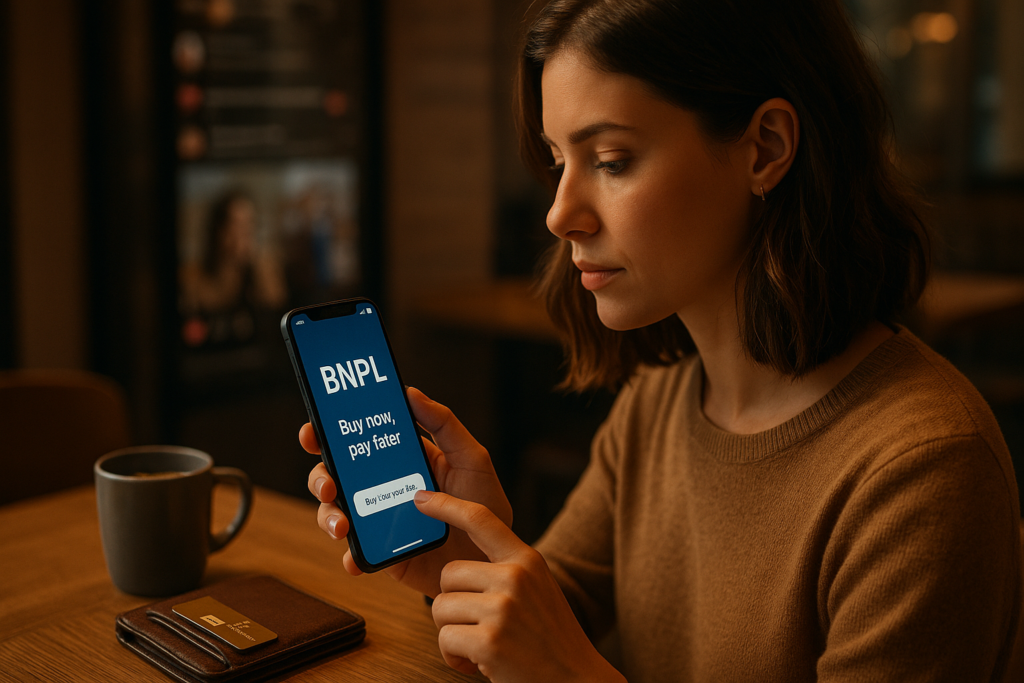In today’s digital age, social media is more than just a platform for sharing photos and updates. It has become a powerful tool that influences how millennials perceive money, credit, and borrowing. One notable trend fueled by social media is the rise of Buy Now, Pay Later (BNPL) services, which are rapidly changing traditional credit habits. However, alongside these innovations, a growing credit stigma persists, often shaped by online narratives and peer influence. This article explores how social media impacts millennial money habits, the rise of BNPL, and the ongoing credit stigma that influences financial behaviors.
Understanding the Credit Stigma Among Millennials
Despite being digital natives, many millennials hold a cautious or even negative view of traditional credit. Credit stigma refers to the negative perceptions and fears associated with borrowing, debt, and credit scores. This stigma can stem from various sources:
- Negative stories about debt and financial hardship circulating on social media.
- Comparison with peers’ financial successes or failures, often showcased online.
- Misconceptions about credit scores and the long-term impact of borrowing.
Social media amplifies these perceptions. Viral posts and memes often depict debt as a sign of financial failure, creating a deterrent to responsible credit usage. As a result, many millennials shy away from applying for traditional credit cards or loans, fearing long-term consequences or social judgment.
The Role of Social Media in Shaping Money Habits
Peer Influence and Social Validation
Millennials are heavily influenced by their social circles. When friends share experiences of using BNPL services or credit perks, others may feel encouraged to emulate them. Social validation encourages the use of financial products that seem trendy or popular, even if they aren’t fully understood.
Information Overload and Misinformation
The abundance of information on social media can be both good and bad. While it provides access to financial tips and advice, it also spreads myths and misconceptions. For example, some posts promote BNPL as a hassle-free way to shop without considering the potential debt trap, leading to impulsive spending behaviors.
Buy Now, Pay Later (BNPL): A Game Changer
BNPL services like Afterpay, Klarna, and PayPal’s Pay in 4 have become hugely popular among millennials. They allow consumers to split purchases into smaller, interest-free payments, making shopping more accessible and tempting. Social media plays a vital role in promoting BNPL, often featuring influencers showcasing how easy and fashionable it is to use these services.
Advantages of BNPL for Millennials
- Immediate gratification without upfront costs.
- Interest-free installment plans if paid on time.
- Enhanced shopping experience with fewer barriers.
Risks and Considerations
- Potential for overspending leading to debt accumulation.
- Impact on credit scores if payments are missed.
- Feeling of social pressure to conform to online trendiness, sometimes leading to poor financial choices.
Comparing Traditional Credit and BNPL
| Feature | Traditional Credit | BNPL Services |
|---|---|---|
| Approval Process | Credit checks, income verification | Minimal to no credit check, depending on provider |
| Interest Charges | Varies, often interest-based for credit cards | Interest-free if paid on time; late fees may apply |
| Impact on Credit Score | Yes, depending on usage and repayments | Varies, some reports suggest minimal impact if paid timely |
| Consumer Perception | Requires financial discipline | Perceived as trendy and convenient |
How Millennials Can Navigate Credit & BNPL Responsibly
- Educate Yourself: Understand the terms and conditions of BNPL and credit products. Read official sources like RBI guidelines for consumer rights.
- Monitor Your Spending: Use budgeting tools to keep track of purchases made via BNPL or credit cards.
- Avoid Impulse Buying: Pause and evaluate whether a purchase is necessary before opting for BNPL.
- Build Credit Responsibly: Consider applying for a zero annual fee card like the HSBC Platinum Credit Card to establish good credit habits.
- Stay Informed: Follow reliable finance blogs like FinWitty for updates on trends and credit tips.
FAQs
1. Is BNPL better than a credit card?
BNPL offers interest-free installments and can be more accessible for quick purchases. However, credit cards provide more flexibility and build credit history. The choice depends on your spending habits and financial discipline.
2. Does using BNPL affect my credit score?
Some BNPL providers report to credit bureaus, impacting your score if payments are missed. Others may not, so always check the provider’s policies.
3. How can I avoid falling into debt with BNPL?
Set spending limits, pay on time, and avoid using BNPL for unnecessary purchases. Maintaining a budget helps prevent overspending.
4. Why is there a social stigma around credit in millennials?
Many associate debt with financial failure due to negative stories and peer pressure. Reducing this stigma involves financial education and responsible borrowing.
Conclusion
Social media shapes how millennials perceive and interact with credit and borrowing options like BNPL. While these tools offer convenience and flexibility, they also carry risks that require responsible usage. Understanding the influence of online narratives and the true nature of credit can help young adults make smarter financial decisions.
If you’re looking to start building credit responsibly, explore options like the HSBC Platinum Credit Card or compare credit cards to find the best fit for your needs. For more tips and updates on financial trends, visit our blog.

